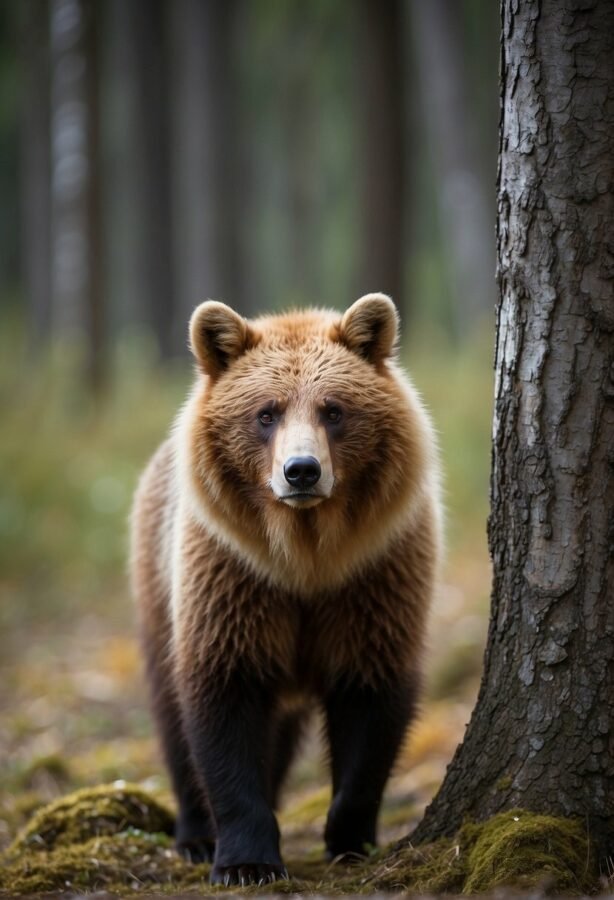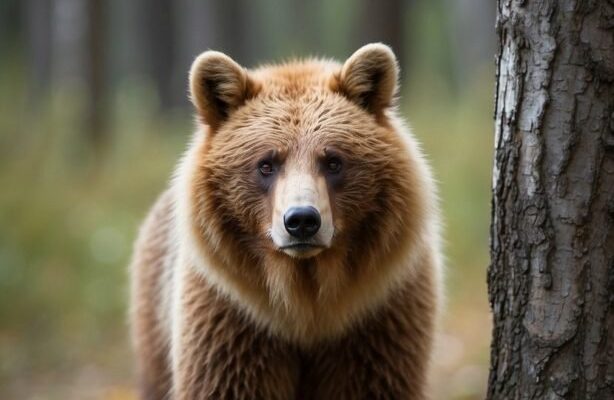
If you’ve ever found yourself squinting into the distance, trying to figure out if that creature is a bear or just something that looks a bit like one, you’re not alone. Let’s dive into the world of *bear look-alikes* and explore how to differentiate them. Whether you’re an animal lover or just curious, understanding these animals can be fascinating and maybe even a bit fun.
1. Grizzly Bear vs. Kodiak Bear
Let’s start with two types of bears that often get confused: the *Grizzly Bear* and the *Kodiak Bear*. At first glance, they seem pretty similar, both sporting a powerful build and a thick, shaggy coat. However, while they inhabit overlapping regions in North America, they aren’t exactly the same.
Grizzly Bears are usually found in the continental United States and Canada, with a well-known population in Yellowstone National Park. They have a distinctive hump on their backs—this is due to their powerful muscles, which help them dig and run. They tend to be a bit smaller, weighing up to 1,500 pounds.
On the other hand, Kodiak Bears hail from the Kodiak Archipelago in Alaska. They can weigh up to 2,500 pounds, making them some of the largest bears in the world! When you see them side by side, the Kodiak’s massive size and slightly darker fur can give them away.
2. American Black Bear vs. Asiatic Black Bear
Next up, we’ve got the *American Black Bear* and the *Asiatic Black Bear*. Both of these bears may look similar, but they have distinct differences that can help you tell them apart.
The American Black Bear is typically smaller, with adults weighing between 200 to 600 pounds. They have a straight face profile and are often found in forests across North America. Their fur color can vary from black to cinnamon or even blonde!
The Asiatic Black Bear, also known as the moon bear due to the white crescent marking on its chest, is found in the forests of Asia. They also have a more pronounced snout and a thicker build. If you spot one, their distinct coloring and the moon-shaped patch can be big clues for identification.
3. Polar Bear vs. Walrus
Now, you might be thinking, “Wait a minute, a walrus looks nothing like a bear!” And you’re right—polar bears and walruses are quite different in many ways. However, they both thrive in cold Arctic environments, which can lead to some confusion when spotted from a distance.
Polar Bears are majestic swimmers and hunters, often seen lounging on ice or roaming the snowy landscape. They have a thick layer of blubber that helps them stay warm. If you spot a large, white creature on the ice, it’s likely a polar bear.
Walruses, on the other hand, have long tusks and whiskers and are generally much bulkier. If you see a large, plump creature with a wrinkled skin texture and those iconic tusks, you’re looking at a walrus. Their social behavior also sets them apart; they often gather in large groups, unlike solitary polar bears.
4. Sun Bear vs. Sloth Bear
Moving on, let’s talk about two lesser-known bears: the *Sun Bear* and the *Sloth Bear*. Both of these bears have some interesting characteristics that make them stand out from the more common species.
The Sun Bear, found in the tropical forests of Southeast Asia, is the smallest of all bears, weighing around 60 to 150 pounds. They have short, sleek fur and are often identified by their golden to white chest patch. Sun bears are excellent climbers, thanks to their long claws.
In contrast, the Sloth Bear is also from Asia but has a much shaggier coat and larger size, weighing between 200 to 400 pounds. They have a more pronounced snout and a distinctive white or yellow “V” shape on their chest. Their diet primarily consists of insects, which they slurp up with their long, flexible mouths—an interesting eating style you won’t see in sun bears.
5. Honey Badger vs. Bear
Now, let’s switch it up and look at the *Honey Badger*. While they’re not closely related to bears, their stout body and fearlessness can lead to comparisons.
Honey Badgers are fascinating little creatures that live in Africa and Asia. They have a stocky body, sharp claws, and tough skin, which gives them the confidence to take on much larger animals—even lions! They are known for their love of honey (hence the name) and their tenacious nature.
When you see a honey badger, you might be thrown off by its bear-like appearance. But remember, their smaller size and distinctive facial markings set them apart. Plus, their behavior is quite different—honey badgers are notorious for their aggressive antics, while bears approach life with a more laid-back, foraging style.
6. Wombat vs. Bear
Here’s something you might find surprising: wombats! Although they’re more like large rodents from Australia, their size and stout appearance often lead people to draw parallels to bears.
Wombats have a thick, stocky build, covered in coarse fur. They weigh around 50 to 110 pounds and spend most of their time digging burrows. Their powerful claws and robust body can remind you of a small bear, but their short legs and distinctively shaped heads are clear differentiators.
If you happen to spot a wombat, you’ll notice they have a unique gait, moving more like a small tank than a lumbering bear. Plus, their herbivorous diet contrasts with a bear’s omnivorous eating habits, emphasizing the differences between these two fascinating creatures.
7. Binturong vs. Bear
Let’s take a look at the *Binturong*, often called a bearcat. With a name like that, it’s easy to see why one might think they’re closely related to bears. However, these creatures are actually more closely related to civets than bears.
Binturongs have a somewhat bear-like body shape and a long, prehensile tail that helps them navigate the treetops in their Southeast Asian homes. They weigh around 60 to 100 pounds, and their fur is dark and shaggy, adding to the resemblance.
However, you can easily differentiate a binturong thanks to its distinct face, which features a flat snout and large, round ears. Plus, they have a unique smell—some say it’s reminiscent of buttered popcorn, which is a quirky fact that makes them even more interesting!
8. Giant Panda vs. Other Bears
Last but not least, let’s discuss the *Giant Panda*. When people think of bears, this adorable black-and-white creature often comes to mind. While they belong to the bear family, their diet and lifestyle set them apart from their bear relatives.
Giant Pandas are primarily found in the mountainous regions of China. They usually weigh between 220 to 330 pounds and are known for their distinct black and white markings. Unlike most bears, pandas are almost exclusively herbivorous, with bamboo making up about 99% of their diet.
While their cuddly appearance might remind you of a stuffed animal, pandas are still bears at heart. Their lifestyle and specialized diet differentiate them from other bear species. If you see a panda, you’ll likely notice how they seem to be in a world of their own, munching away tirelessly on bamboo.
Identifying animals that share similarities with bears can be a fun and enlightening experience. From grizzlies to binturongs, each animal offers unique characteristics and behaviors that make them stand out. The more you learn about these creatures, the more you can appreciate the beauty and diversity of the animal kingdom.
Next time you’re out in nature or even at the zoo, keep these distinctions in mind. It’s a wonderful way to deepen your understanding of wildlife. After all, whether it’s a bear or one of its look-alikes, there’s always something new to discover!

